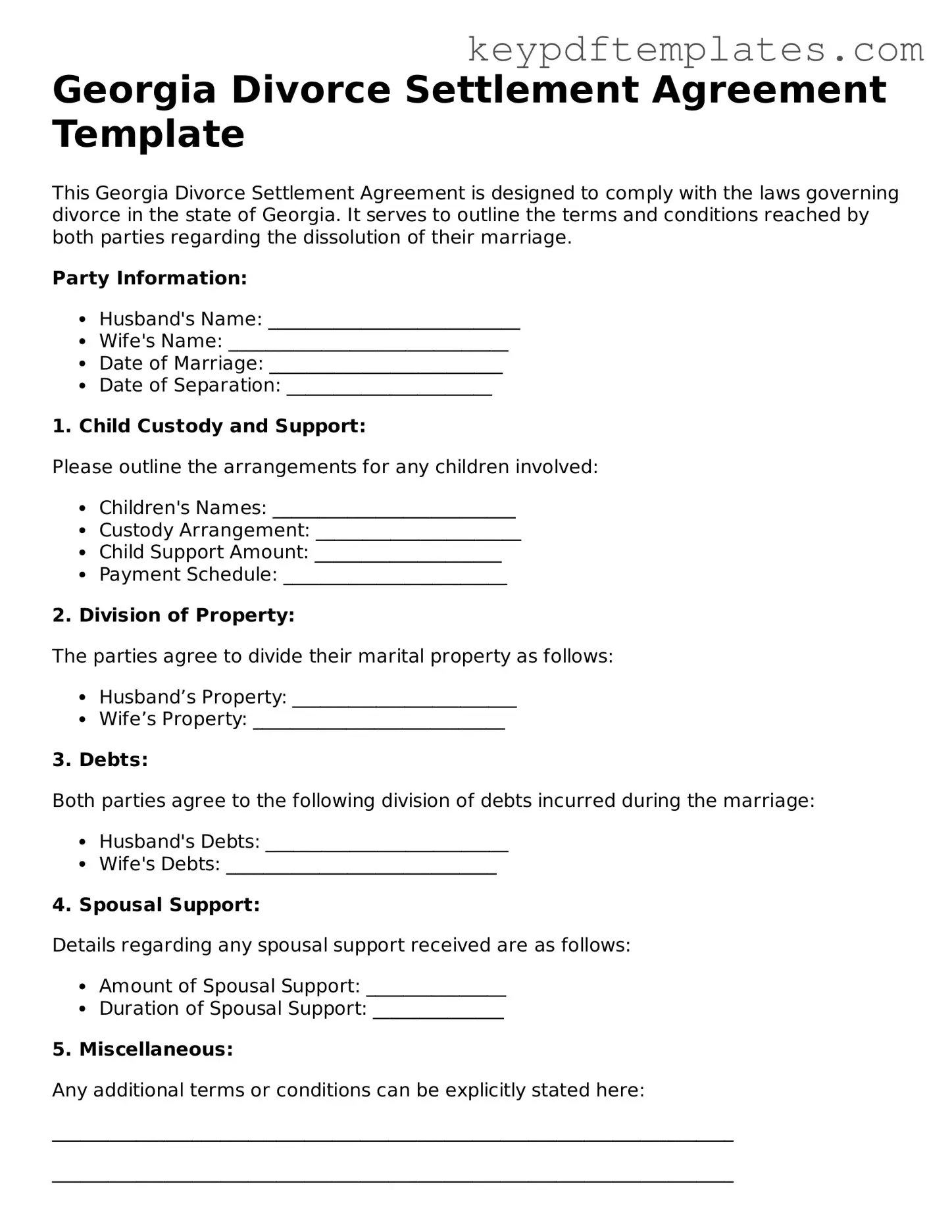Legal Divorce Settlement Agreement Document for the State of Georgia
The Georgia Divorce Settlement Agreement form is a legal document that outlines the terms of a divorce between two parties. This agreement covers various aspects, including property division, child custody, and support obligations. It is essential for ensuring that both parties understand their rights and responsibilities following the divorce.
Modify Document Online
